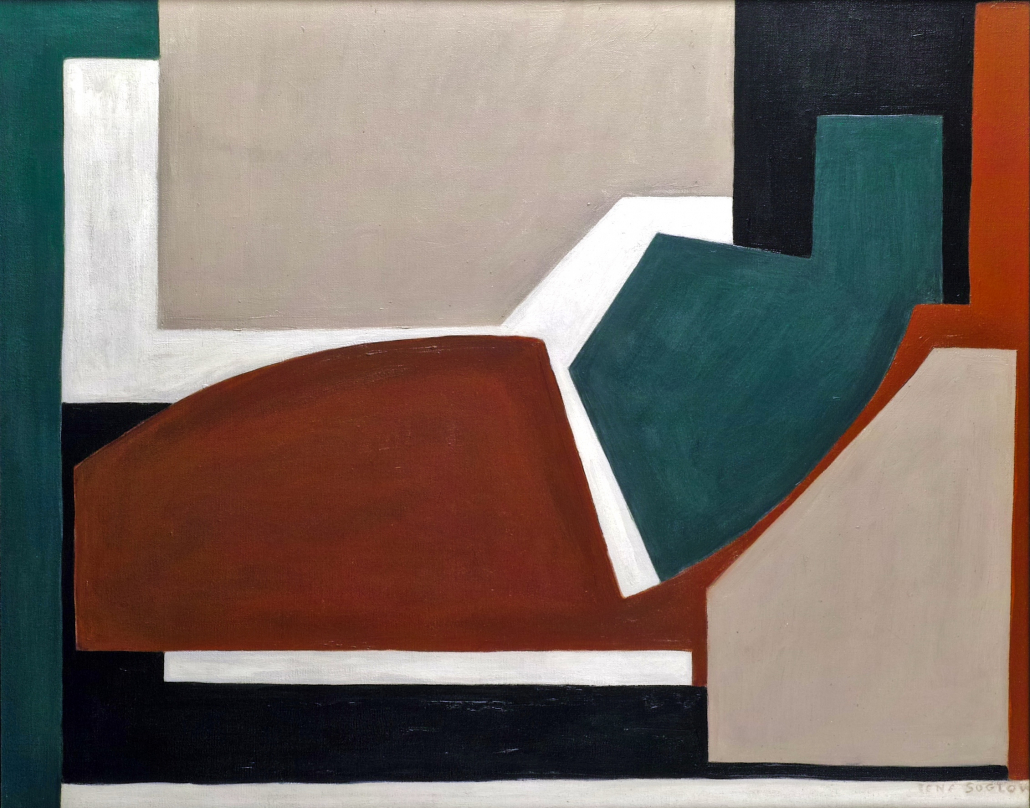Tona Soglow
1933 – 1998
American School
Reclining Woman
Oil on Canvas. 50 x 65cm (20” x 24” in.). Signed lower right: TONA SOGLOW
One cannot reasonably consider the achievement of Tona Soglow without reference to her father, Otto Soglow, one of the most brilliant and beloved cartoonists that America produced in the twentieth century. He became known internationally for his charming figure of The Little King, created for New Yorker Magazine in 1931. Born and raised in New York City, Soglow’s first illustration was published in 1919. By the mid-1920s, his career burgeoned when he joined the staff of New Yorker, together with Harold Ross, S.J. Perelman, James Thurber, E.B. White, and others, who greatly contributed to the magazine’s popularity with their sophisticated and often zany humor. Soglow’s talentattracted the attention of the newspaper tycoon, William Randolph Hearst, and he tendered an offer that Soglow could not refuse. In accepting it, not only did it guarantee the artist’s financial security, but the regular appearance of The Little King in Hearst’s syndicated, coast-to-coast publications turned him into a rock-star overnight.
Tona Soglow was the artist’s only daughter (her name was a contraction of Otto’s first name and that of his wife, Anna.) A precocious talent, he trained her and oversaw her progress, transmitting the secret of « the art that conceals the art » that was the basis of his elegant depictions, delineated with lucidity and deceptive simplicity. Under her father’s aegis, and seconded by her own artistic inclinations, Tona Soglow expressed herself in a Modernist, Constructivist language, a rigorously pruned-down version of Neo-Plasticism.
The present painting, executed circa 1950, is a hybrid of objective and non-objective abstraction where the incipient representation of a human figure is alluded to with ascetic restraint. At first, one interprets the painting as a harmoniously balanced assemblage of coloredorthogonal rectangles and squares. After closer and more thoughtful inspection, one perceives the schematic form of a reclining woman, and the accuracy of the second reading is confirmed. Tona Soglow’s palette is limited to billiard green, brown, black and off-white, perhaps indicating her nostalgia for the atmosphere of Braque and Picasso’s earliest experiments with analytical cubism, a choice of tonalities that runs counter to those of more recent European schools of abstraction – De Stijl, Bauhaus or Cercle et Carré – where works are typically dressed in brighter hues, most notably, the primary colors of yellow, red and blue. These are noticeably absent, one might even say cast out of Tona Soglow’s masculine universe of secondary tones. The artist’s economy of means in indicating the female form, the voluptuousness of which is reduced to a positive and negative curve, enables one to draw parallels between her representation and those of the Synthetic Cubist and Purist movements. Another painting by Tona Soglow from the same period was recently offered on the New York market. Identical in palette with the present work, it is also an arrangement of rectangles and squares, two elements of which are also singularized by opposing curved edges. However, in this painting, concessions to figurative representation are abandoned entirely – or are so arcane as to make the nature of external reference indecipherable.
In later life, Tona Soglow continued her experiments in a non-objective language. Her color palette became more varied and inclusive, her forms, kaleidoscopic and more fragmented. However, It is her rare, early compositions that perhaps fascinate us most given their unrelentingly conceptual asceticism and fastidious execution. In finality, Tona Soglow’s philosophical and aesthetic choices permit her works to leap and bound over seven decades and to thrust their presence into a contemporary framework, where their freshness and pertinence resonate in pitch-perfect unison with the minimalism of the present era.

